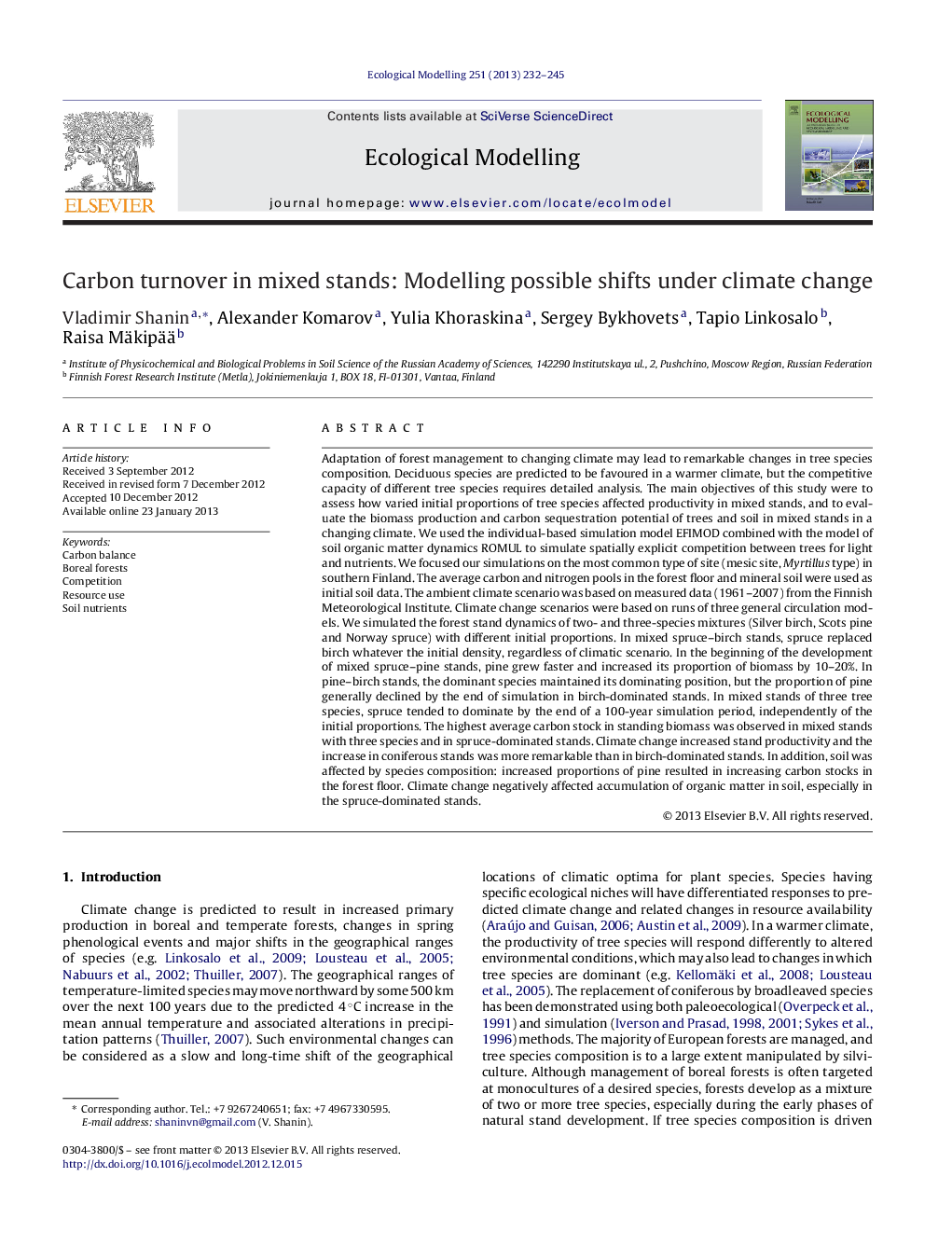| Article ID | Journal | Published Year | Pages | File Type |
|---|---|---|---|---|
| 4376157 | Ecological Modelling | 2013 | 14 Pages |
Adaptation of forest management to changing climate may lead to remarkable changes in tree species composition. Deciduous species are predicted to be favoured in a warmer climate, but the competitive capacity of different tree species requires detailed analysis. The main objectives of this study were to assess how varied initial proportions of tree species affected productivity in mixed stands, and to evaluate the biomass production and carbon sequestration potential of trees and soil in mixed stands in a changing climate. We used the individual-based simulation model EFIMOD combined with the model of soil organic matter dynamics ROMUL to simulate spatially explicit competition between trees for light and nutrients. We focused our simulations on the most common type of site (mesic site, Myrtillus type) in southern Finland. The average carbon and nitrogen pools in the forest floor and mineral soil were used as initial soil data. The ambient climate scenario was based on measured data (1961–2007) from the Finnish Meteorological Institute. Climate change scenarios were based on runs of three general circulation models. We simulated the forest stand dynamics of two- and three-species mixtures (Silver birch, Scots pine and Norway spruce) with different initial proportions. In mixed spruce–birch stands, spruce replaced birch whatever the initial density, regardless of climatic scenario. In the beginning of the development of mixed spruce–pine stands, pine grew faster and increased its proportion of biomass by 10–20%. In pine–birch stands, the dominant species maintained its dominating position, but the proportion of pine generally declined by the end of simulation in birch-dominated stands. In mixed stands of three tree species, spruce tended to dominate by the end of a 100-year simulation period, independently of the initial proportions. The highest average carbon stock in standing biomass was observed in mixed stands with three species and in spruce-dominated stands. Climate change increased stand productivity and the increase in coniferous stands was more remarkable than in birch-dominated stands. In addition, soil was affected by species composition: increased proportions of pine resulted in increasing carbon stocks in the forest floor. Climate change negatively affected accumulation of organic matter in soil, especially in the spruce-dominated stands.
► We simulated growth of mixed stands at climate change with an individual-based model. ► Spatially explicit competition among trees for light and soil nutrition was simulated. ► Climate change led to a gain in productivity for all species, especially conifers. ► Carbon in soil increased with stand growth while climate change sped up decomposition.
